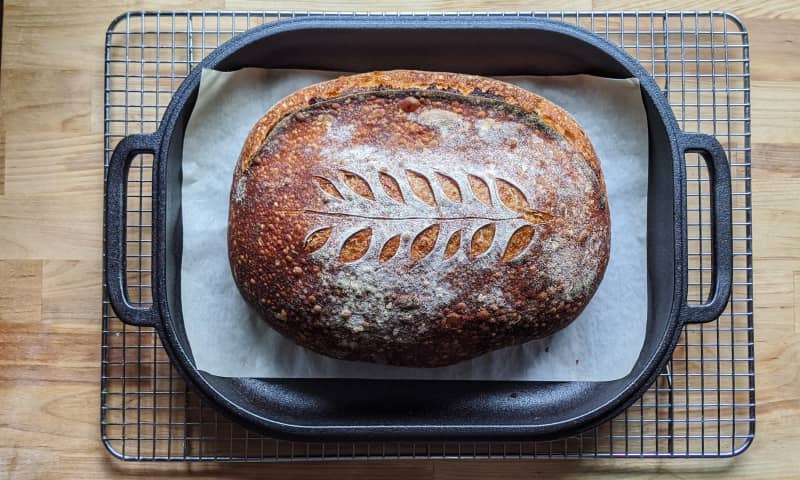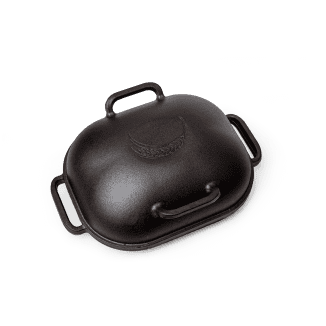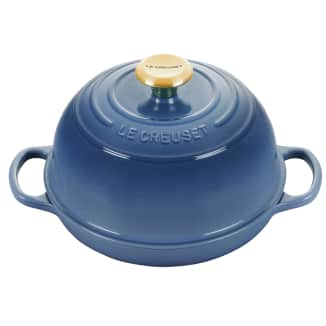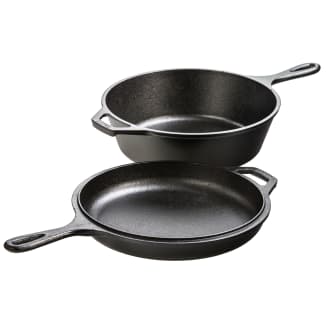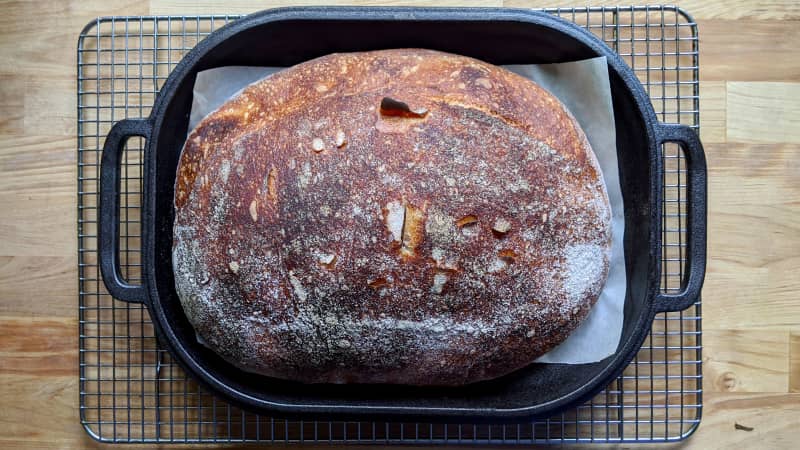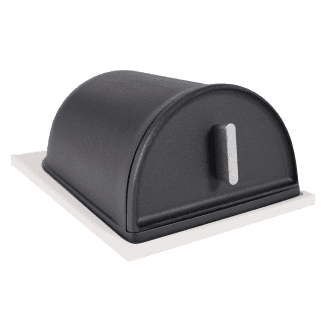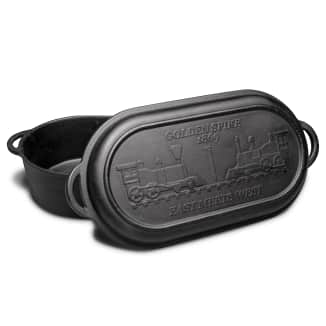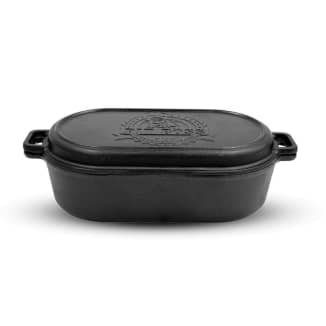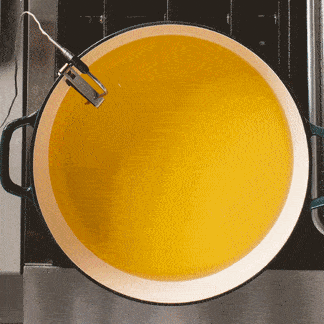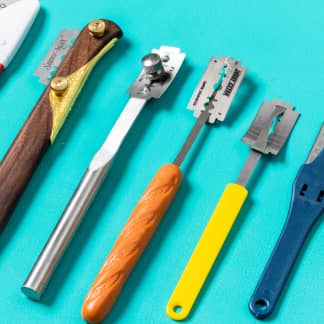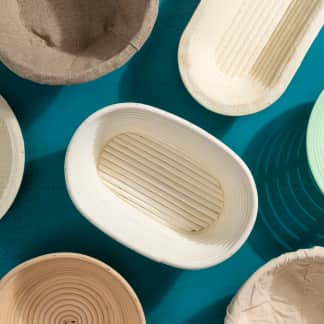If you bake bread regularly, you might want to invest in a dedicated bread oven. Our favorite, the Challenger Bread Pan, allows you to bake gorgeous large round and oval loaves and is fairly easy to use. The Le Creuset Bread Oven is our Best Lightweight Option. It’s nearly as pricey as our favorite and isn’t quite as versatile—it can make large round loaves but can only do smaller oval ones. But at just under 10 pounds, it’s the easiest bread oven to lift and maneuver. Finally, the Lodge 3.2 Quart Cast Iron Combo Cooker is our Best Buy. Like the Le Creuset, it can make large round loaves or smaller oval ones. But we think many bakers will appreciate its more compact size, relatively light weight, and significantly lower price.
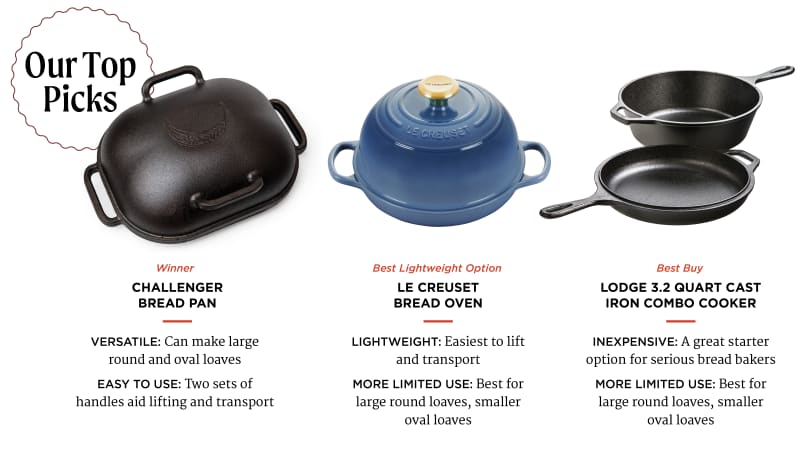
We love baking bread in a Dutch oven. Because it’s made of cast iron, a Dutch oven retains and radiates heat beautifully, and its tight-fitting lid helps keep in steam so that the bread rises properly and develops a beautiful, crackly crust. Better still, it’s a piece of cookware that many home cooks already own.
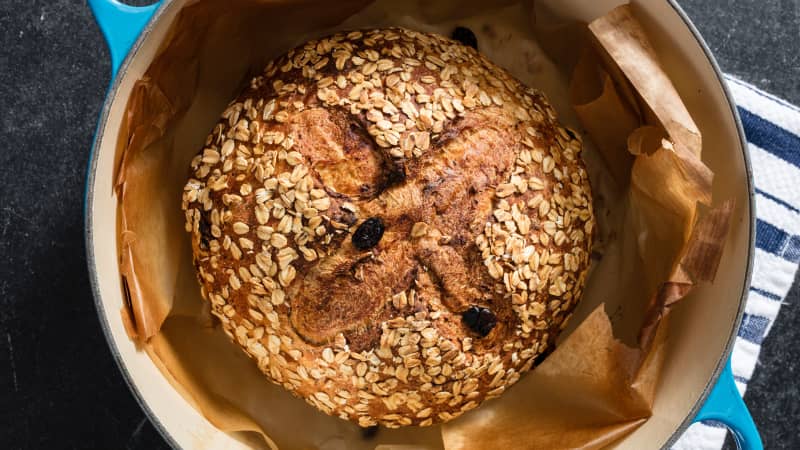
But there are a few drawbacks to using our favorite Dutch ovens. First, they limit the shapes of loaves you can make: Although they’re spacious, they’re round, so you can’t bake large batards (oval-shaped loaves) in them, only boules (round loaves). Second, it’s easy to burn your knuckles or forearms on the tall sides of a hot Dutch oven while you’re lowering in dough or lifting out bread. And finally, if you use your Dutch oven for cooking other foods—stews, braises, soups—any traces of oil or fat leftover from cooking can polymerize and form sticky patches when exposed to the high heat used to bake bread. While these sticky patches don’t affect the pot’s performance, they are unappealing to look at and difficult to get rid of.
If you bake bread often, you might want to invest in a dedicated bread oven. While this piece of bakeware can be made from different materials, we focused on models made from cast iron, as they have all of the advantages that Dutch ovens have—and then some. Whether made from traditional or enameled cast iron, these ovens typically have dark interiors—a big plus, since dark cast iron radiates more heat than the light-colored interiors of our favorite Dutch ovens. As a result, all the models we tested are capable of making bread with crusts that were even more appealingly blistered and deeply caramelized than those made in a Dutch oven.
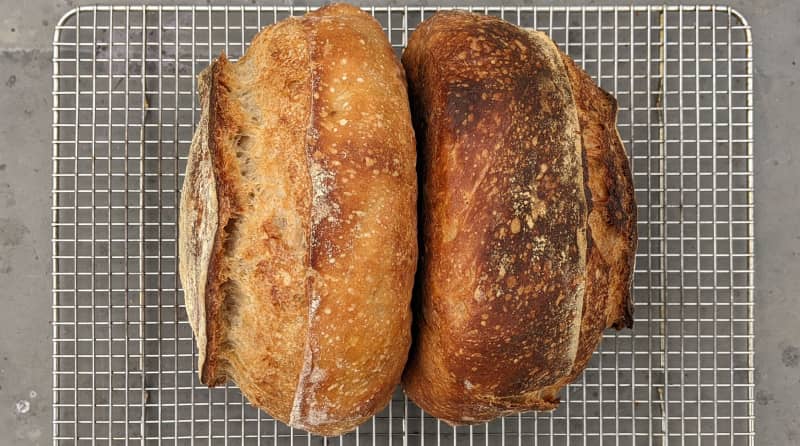
In addition, bread ovens are less likely to stain, and in some ways, are a lot easier to use. Most are constructed similarly, with two basic parts: a shallow base and a domed top. You preheat both parts in the oven and then load your dough onto the base—a task that’s a lot simpler, safer, and less awkward to accomplish than with a Dutch oven since the bread oven’s base doesn’t have tall walls. You cover the base with a domed top, which traps heat and steam and allows the dough to expand while cooking. Halfway through baking, you remove the top, letting the steam out and allowing the bread’s crust to crisp up and brown.
You can’t go too far wrong with any of the models we tested, but a few factors made certain models more versatile and easier to use than others.
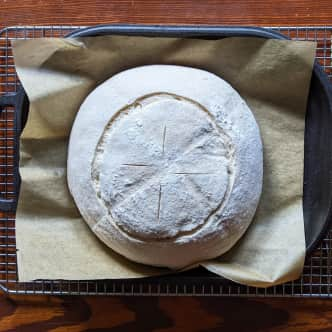
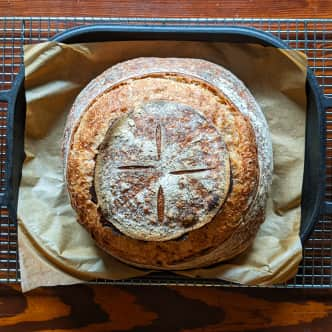
Bread sits in our favorite bread oven before and after baking.
What to Look For
- Simple Cast-Iron Construction: We prefer models that had just two parts—a base and a top—made completely of durable cast iron. One model had a cast-iron dome and removable door, but its base was a baking stone made of Cordierite, a high-temperature ceramic. It also had to be used with a dedicated baking peel with a detachable handle. While this model made good bread, we had to be more careful when handling its base than we did with all–cast iron models. And it was easy to misplace its many smaller parts—we lost the handle to the baking peel at one point and struggled to load and unload bread as a result.
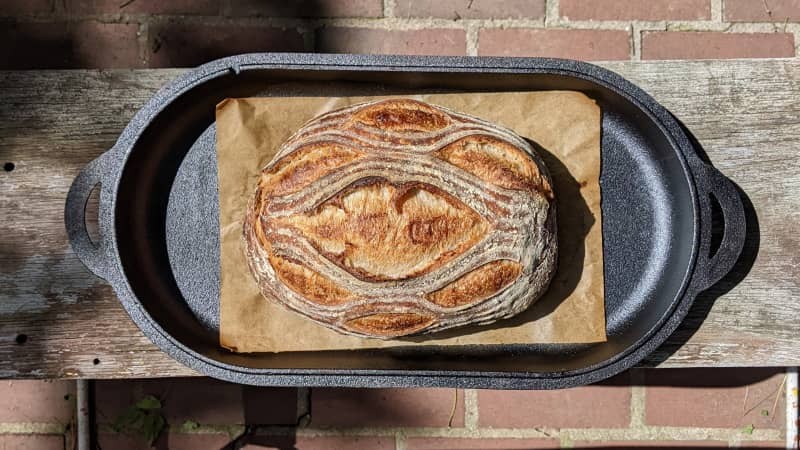
- A Large, Oval Base: We preferred bread ovens with bases big and broad enough to accommodate boules and batards weighing at least 1 kilogram, a standard size for many bread recipes, including ours. It wasn’t a deal breaker if a bread oven could only do one shape or the other or could only produce a shape in a smaller size. But we think that if you’re going to invest in a dedicated bread oven, it should allow for as much versatility as possible. In practice, only the biggest oval-shaped bread ovens could do both large batards and boules.
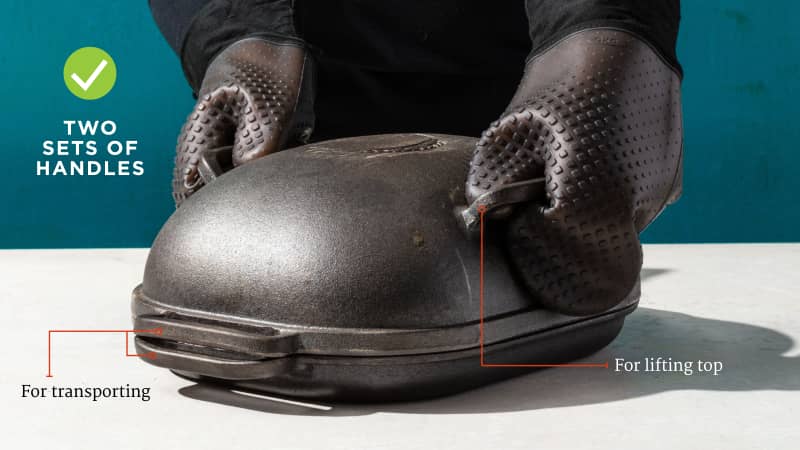
- Two Sets of Large, Easy-To-Grip Handles: Most of the models we tested came with sets of handles that we used both to transport the bread ovens into and out of our actual oven and to lift and lower their tops. Unfortunately, some handles were small and hard to grasp, especially when our hands were protected by thick oven mitts. In addition, the sets were often aligned in such a way that it was tricky to separate the top handle from the base handle when we needed to load the dough or remove the top midbake. We preferred models with two distinct sets of large handles: one on the sides of the oven for transporting and a knob or another set on the top itself, which allowed us to lift it effortlessly without fear of burning ourselves.
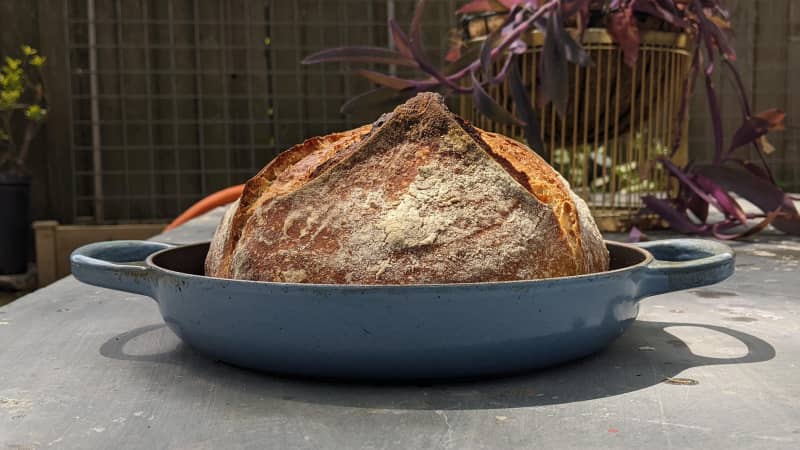
Other Considerations
- Weight: There’s no getting around it: These bread ovens are heavy. Most of the models we tested weigh more than 14 pounds, the weight of our favorite Dutch oven, and our favorite weighs almost 22 pounds. This heavier weight is due to the bread ovens’ especially thick walls—most are about twice as thick as our favorite Dutch oven’s. There are pros and cons to this weight. It can take a bit longer to preheat these heavy bread ovens—count on a full hour for most models. But because they’ve got such substantial thermal mass, once they’re hot, they stay hot. As a result, bread can bake quite a bit faster than in a Dutch oven—as much as 20 minutes faster with one bread oven. (You may need to tinker with your oven temperature and timing to get the results you like best.) Because bread bakes more quickly, it can have a slightly moister crumb and a crust that is thick and not as tough as some we’ve made in a Dutch oven. The greater thermal mass of most ovens also makes it easier to bake several loaves of bread in succession without reheating them for long periods. The big downside? The heavier the oven, the more of a pain it is to transport and maneuver. We think our favorite bread oven’s advantages justify its heavy weight. But if you need a lighter model, the Le Creuset Bread Oven or Lodge Combo Cooker might be better options.
The Tests
- Bake 6 loaves Pain au Levain in each oven: 3 boules and 3 batards, scaling down recipe as needed
- Maintain oven between uses
How We Rated
- Performance: We evaluated the ovens on the quality of the bread they produced.
- Ease of Use: We evaluated the ovens on how easy they were to transport and maneuver.
- Versatility: We evaluated the ovens on how well they accommodated full-size (1-kilogram) boules and batards.
